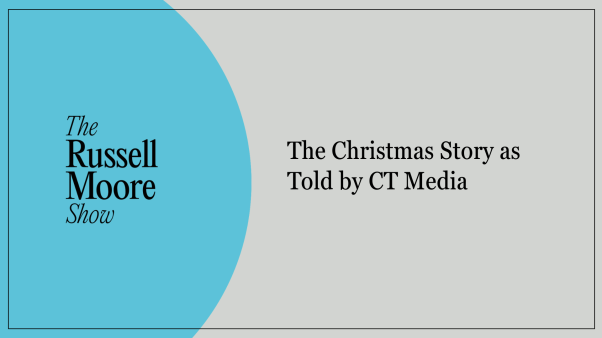In the early 1990s, John Piper and Wayne Grudem published Recovering Biblical Manhood and Womanhood under the auspices of the Council on Biblical Manhood and Womanhood (CBMW). The book targeted the rise of “evangelical feminism” and addressed gender dynamics in both the home and the church. Almost three decades later, issues of women and leadership remain reliable sources of conversation and controversy. In her pointedly titled book, Recovering from Biblical Manhood and Womanhood: How the Church Needs to Rediscover Her Purpose, author Aimee Byrd argues that men and women need to reclaim their shared calling as siblings in Christ. CT senior associate editor Andrea Palpant Dilley spoke with Byrd about her book.
How does this book interact with your previous books?
Each one has built on the others, in terms of what I’ve been looking for as a laywoman in the church. My first book encouraged women to see themselves as theologians and to take that calling seriously. The second book did theology. The third book examined the whole culture of women’s ministry and how it’s letting bad theology seep into the church.
With this new book, I wanted to focus on the need for training and discipleship as brothers and sisters in the church. Are we being discipled differently? How does our reading of Scripture affect our relationships in the church? Until both men and women grow in their understanding of their relationship to Scripture, tension between the sexes will persist.
In the context of the debate between complementarianism and egalitarianism, how do you identify yourself?
I would label myself as confessional. I’m in the Orthodox Presbyterian Church, so I’m inside the bounds of the Westminster Confession of Faith. The big deal is getting unified on first-order doctrinal issues. The ordination debate is a second-order issue.
I do see the pastoral role as a place for qualified, ordained men, but not because men are naturally better leaders. I see pastors as representatives of Christ, the best man. Nonetheless, I can’t identify with complementarianism, because I believe it’s a movement with a lot of doctrinal error, even first-order error. There are distinctions between men and women, of course. But we need to talk about all this with humility.
Your skeptics will cry foul and say, “Isn’t this just a complementarian problem, or at least a problem that’s exacerbated by complementarian thinking?”
I’m critiquing a complementarian movement, so there is some weight to that argument. But this is a problem for all of us. We don’t fully grasp the beauty of our creation as men and women. Do we view one another as brothers and sisters who are called to promote one another’s holiness? Do we see the spirit of reciprocity that comes across in Scripture? Do we see that beautiful picture that Paul gives us in Romans 16, with all its exhortations to greet friends and co-laborers in the gospel? He’s giving a beautiful picture of the theology he teaches, where both men and women serve under the ministry.
We are all responsible for communicating God’s Word to each other as disciples. In Romans 16, we see Paul passing the baton to Phoebe; he authorizes her to deliver his letter to the Romans. He relies on her to communicate the meaning of that letter, which he knew would generate many questions. We have the baton in our hands, as well, to share God’s Word with one another. That’s a great and beautiful responsibility.
You argue that the prevailing CBMW view of women is parasitic. The aims of women are defined as supporting the aims of men, with women reduced to the role of “masculine affirmers.” How do you see that playing out in the church?
I’m critiquing the book Recovering Biblical Manhood and Womanhood, where John Piper defines the heart of femininity as “affirming men.” Piper has contributed so much to the church. But that definition leaves no room for female agency or feminine contribution. I don’t believe my femininity is defined by how I nurture male leadership. Women have unique contributions that are needed in the church. There’s a reciprocity between manhood and womanhood that’s dynamic, that moves us to our shared purpose: eternal communion with the triune God.
So often we hear that the woman is subordinate to the man because Eve was created after Adam. But in the creation story, man is inadequate without woman. He needs a corresponding strength. So when man sees woman, he sees something of his ultimate identity as Christ’s bride.
You spend quite a bit of time exploring the Old Testament prophetess Huldah. Why is she significant to your argument?
First of all, when Huldah’s name comes up, I think of that moment from Ferris Bueller’s Day Off when the teacher calls out, “Bueller? . . . Bueller?” No one knows who he is. No one knows who Huldah is, either. We see her in Scripture twice [2 Kings 22 and 2 Chronicles 34].
In the Old Testament, we have King Josiah sending out dignitaries. A book of the law is discovered, and he needs to know if it’s the real deal. Jeremiah and Zephaniah were prophets at that time, yet they were not sought out. Instead, Josiah’s advisers find Huldah the prophetess, and she authenticates the book, which is largely accepted as the heart of Deuteronomy. It’s the first time we see the Word of God being authoritatively authenticated as canon, and it’s done by a woman. That’s amazing. In response, Josiah repents.
We have to ask: What is the Holy Spirit saying to the church today with this part of Scripture?
You argue that reading Scripture is a communal and coed enterprise. But what if women want “a room of their own,” exegetically speaking?
I encourage coed learning in the right circumstances, but I also encourage exclusive learning in men-only and women-only groups.
There are benefits to exclusive studies. Titus 2 speaks to that, with its specific instructions for different demographics in the church. But we can’t leave out the element of doctrine in either case. Men and women alike need to talk about healthy doctrine and how that pours into our relationships within Christ’s body. When we start giving women separate pink Bibles, that sends a different message. It’s the same way radical feminists think—that the Bible is so patriarchal that we need our own interpretations to understand it better. That’s a dangerous road to go down. It’s not scriptural.
What segregation do you see in the pages of study Bibles?
It’s present in both the articles and the contributors. Articles for women tend to be about eating disorders, missional living, forgiveness, healing, and so on. They’re mainly addressing our weaknesses. But with men’s Bibles, the articles are mainly addressing leadership, agency, and calling. With the ESV Men’s Devotional Bible, there are only male contributors. But with the ESV women’s Bible, there are both male and female contributors.
Women are in a double bind. They’re not always accepted as discipleship leaders in the church. But in parachurch ministries, where they are free to disciple, they don’t get doctrinal instruction and ecclesial accountability. What’s your solution?
There’s a reason why women are thriving in parachurch ministries. Women are being invested in and heard. We’re pumping out books and women’s conferences. And so I see why women are flocking to those spaces. Their own churches aren’t investing in them as disciples. My book is a call to the church to invest in laywomen and men with gifts in teaching and discipleship—and to encourage a healthy reciprocity between them. It’s not going to happen unless church officers are taking the lead.











